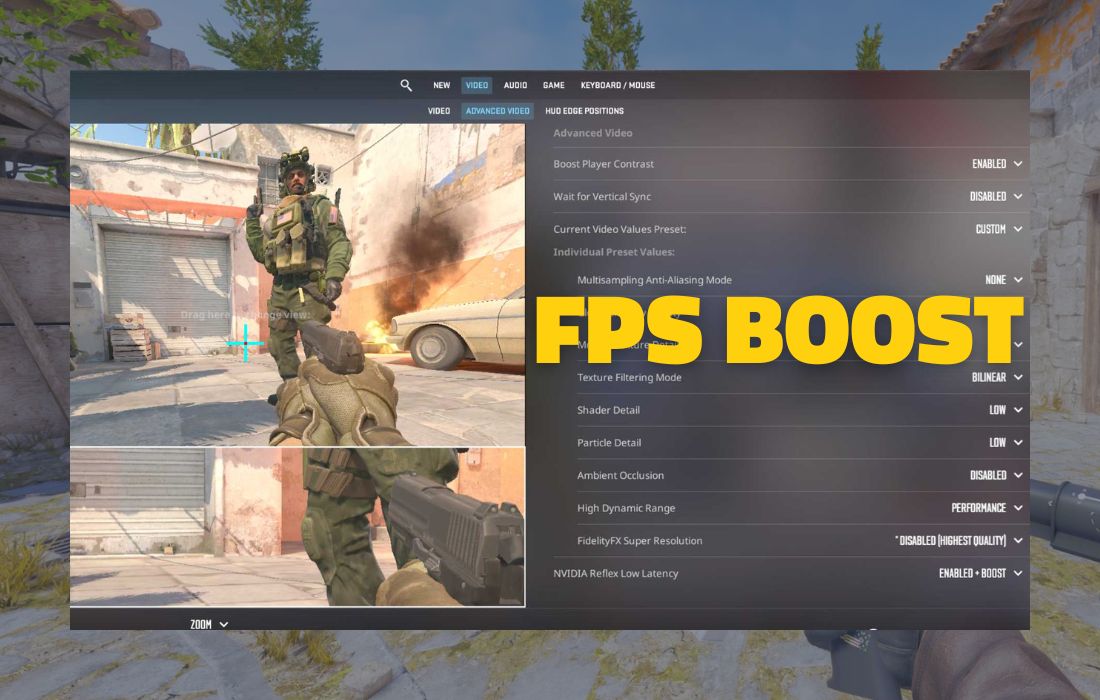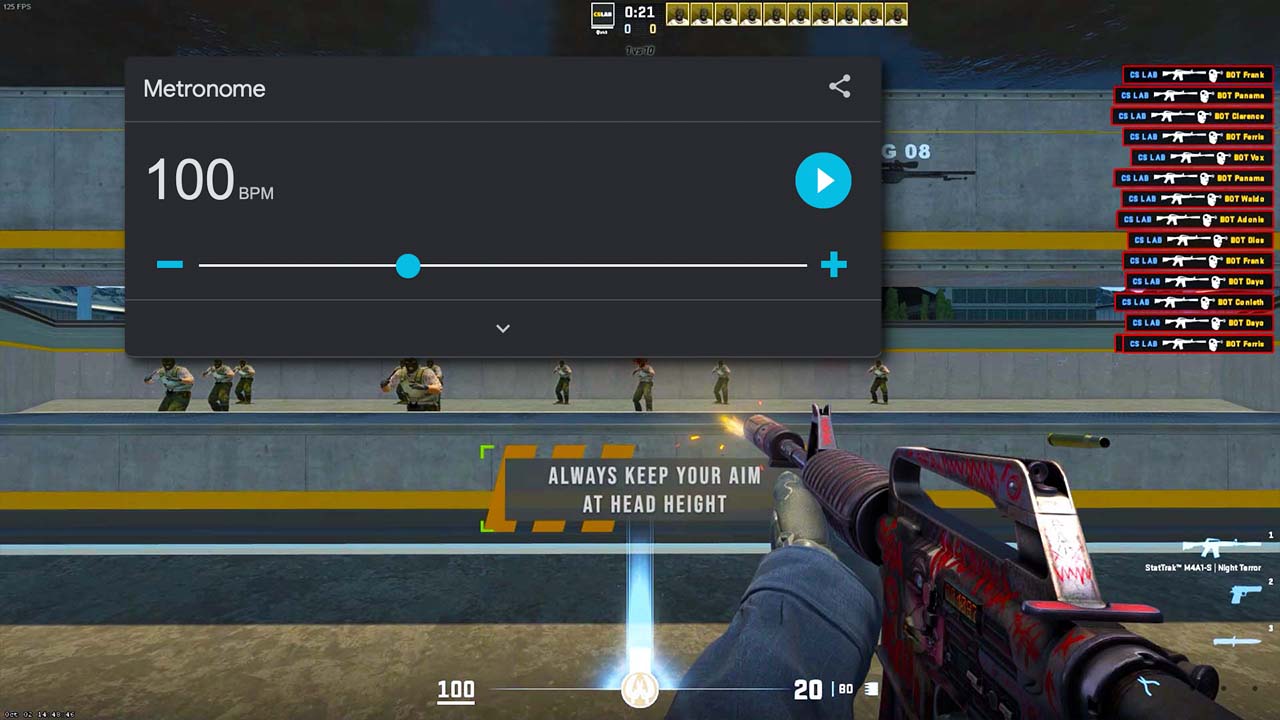Low frame rates are the last thing you want to hinder your performance in CS2. In a competitive game like CS2, lag, and stuttering can be a major impediment to progressing to higher ranks. While the system requirements for CS2 are not particularly high, the game can still cause issues on occasion. These issues can be really frequent if you have a low-end PC. Combine that with the fact, that CS2 is built on the newer Source 2 engine and has become a bit more graphically demanding than in the past.
With that said, we can still optimize CS2 and Windows settings to squeeze out more performance from your setup. These optimizations can increase your fps significantly and reduce the input lag a good bit. So, here is everything you need to know about boosting your fps in CS2.
Reasons for Low FPS
There could be many reasons why you could experience low fps, but the most common ones are.
Most common reasons for low FPS
- PC hardware does not meet the minimum system requirements for the game
- Background applications or processes hogging up resources
- The graphic card and processor bottlenecks or faulty hardware in general
- Virus or malware infections
- Outdated graphics drivers
These problems can cause a significant decrease in overall performance, resulting in low fps, stutters, awful input lag, and a poor gaming experience.
Best Video Settings in CS2
Optimizing the Video settings in CS2 is one of the most effective and quickest ways to increase your frame rate. The default settings provide a balance of quality and performance. While that may be acceptable for casual CS2, competitive play requires every bit of performance possible.
With that said, here are the optimal video settings for CS2 performance. The video settings are organized into two sections: Video and Advanced Video.
Video settings
Brightness: 95 – 105%
Aspect Ratio: 16:9 or 4:3, depending on your resolution
Resolution: Personal Preference (some good options include 1280×960, 1920×1080, 1280×1024)
Display Mode: Fullscreen
Refresh Rate: Maximum
Laptop Power Savings: Disabled

Advanced Video Settings
This is where the actual optimization happens, the Advanced Video settings allow you to configure the graphical fidelity of the game. Keep in mind these are performance-first settings so you may see a significant difference in visual quality.
Boost Player Contrast: Enabled
Wait For Vertical Sync: Disabled
Current Video Values Preset: Custom
Multisampling Anti-Aliasing Mode: None – Increase it if you see shimmering on objects.
Global Shadow Quality: High
Model / Texture Quality: Low
Texture Filtering Mode: Bilinear
Shader Detail: Low
Particle Detail: Low
Ambient Occlusion: Disabled
High Dynamic Range: Performance
Fidelity FX Super Resolution: Depends on your system specs. If you have a low-end system, go for performance.
NVIDIA Reflex Low Latency: Enabled + Boost

Best Launch Options For FPS
Launch Options are a great way to customize your CS2 experience, especially if you are switching setups a lot. Launch Options are commands that CS2 follows after opening and bypasses any other setting in-game. For performance, the best launch options to use are:
+fps_max: Uncaps FPS
-nojoy removes joystick support from the game, freeing up resources.
-high – Runs CS2 with high priority, making your computer allocate more resources to running it.
–fullscreen – forces CS2 to launch with fullscreen
+r_dynamic 0 – Removes dynamic lighting from the game, hence increasing fps.
-vulkan – Switches the rendering mode from DX11 to Vulkan. It can improve fps for some PCs and not for others. Test it out for yourself, to see if it helps.
Just copy and paste this into your Launch Options.
+fps_max -nojoy -high -fullscreen -vulkan +r_dynamic 0
Best Nvidia Settings For Fps
The NVIDIA control panel is a great way to further optimize your PC for performance. By tweaking some settings you might start to see improvements in your FPS. We already have a dedicated guide on the Best NVIDIA settings to Boost FPS, but here is a quick overview. Just head over to Manage 3D settings and copy these settings.
Image Scaling: Off
Ambient Occlusion: Off
Anisotropic filtering: Application-controlled
Antialiasing – FXAA: Off
Antialiasing – Gamma correction: Off
Antialiasing – Mode: Application-controlled
Antialiasing – Transparency: Off
Background Application Max Frame Rate: Off
CUDA – GPUs: All
CUDA – System Fallback Policy: Driver Default
DSR – Factors: Off
Low Latency Mode: On (Use Ultra if you prefer Vsync)
Max Frame Rate: Off
Multi Frame Sampled AA (MFAA): Off
OpenGL GDI Compatibility: Auto
OpenGL rendering GPU: Auto-select
Power management mode: Prefer maximum performance
Preferred refresh rate: Highest Available
Shader Cache Size: Driver Default
Texture filtering – Anisotropic sample: Off
Texture filtering – Negative LOD bias: Allow
Texture filtering – Quality: High Performance
Texture filtering – Trilinear optimization: On
Threaded optimization: On
Triple buffering: Off
Vertical Sync: Use the 3D application setting
Virtual Reality pre-rendered frames: 1
Vulkan/OpenGL present method: Auto
*Restart your PC after applying these settings.

Windows Tweaks to Improve FPS in CS2
Windows by default comes with a lot of telemetry and bloatware, which can cause input lag and performance issues. However, it is quite easy to fix them
Disable Fullscreen Optimization
- Open this folder, C:\Program Files (x86)\Steam\steamapps\common\Counter-Strike Global Offensive\game\bin\win64
- Right-click on cs2.exe and select Properties
- Go to Compatibility Tab and check the Disable FullScreen Optimisation box.

Delete Temporary Files
- Hit Windows+R to open the Run window.
- Type temp and hit enter.
- Press Ctrl + A to select every file in the folder
- Hold down Shift + Delete it to remove it from your PC.

Enable Game Mode
- Go to Game Mode Settings through the Windows Search Bar.
- Make sure Game Mode is turned On.

Disable Background Apps
- Go to Background Apps through the Windows Search Bar.
- Turn off Let Apps run in the Background.

Disable Animations to Prioritize Performance
- Go to Advanced System Settings through the search bar
- Navigate to the Advanced Tab
- Click on Settings Under Performance.
- Click on the box that says Adjust for Best Performance
- Hit Apply to save the settings
Conclusion
After following this guide, you can expect a significant boost in your FPS, and don’t worry, these settings have been thoroughly tested and won’t do any harm to your PC





